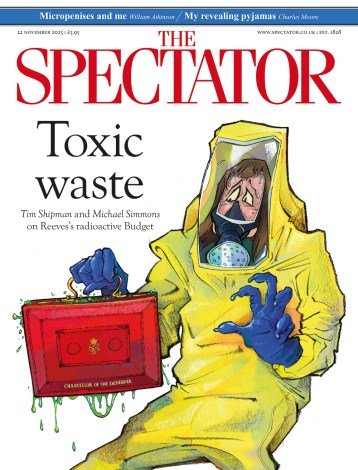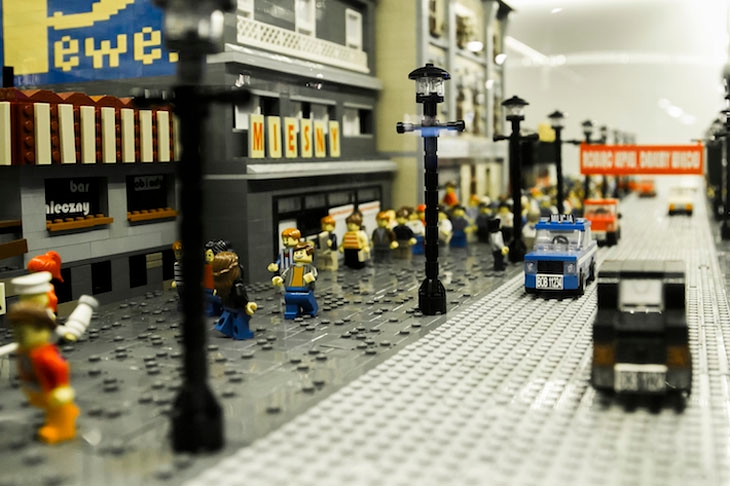I went to a barbecue. Everyone was patient and well disposed towards the silent, depressed, two-toed sloth in their midst. The eye contact told me that I was included in the conversation but it was also understood that I need not contribute. They comprehended and they sympathised. If I didn’t want to, there was no need to go into it or explain. Or indeed to say anything. I sat a little apart from the nest of outdoor furniture and the circle of conviviality revolving around it, puffing on my new vaping contraption, emitting long plumes and billows of white, ‘fresh mint’-flavoured steam.
Present were five adults and a child. The child was a seven-year-old boy called George Eagle. George Eagle was brimming with eager intelligence and vivid imagination. One by one he’d tried them all, but found the adults far too pedestrian, statuesque and grown-up for his needs. As a last resort, he endeavoured to coax some life and interest from the peripheral paralytic with his head lowered, pondering his smoke machine. Emerging from the house bearing a three-storey Lego police station, George Eagle placed it beside me on the lounger and showed me around the place. There was a lavatory, a bullet-proof glass-fronted armoury, and an interrogation room with a working trapdoor in the floor. Although the blue lettering above the entrance said that it was a police station, George confided that the building was in fact the headquarters of an international crime-fighting force known as the Good Guys. That the Good Guys invariably beat up their sworn enemies the Bad Guys was due not only to moral force, apparently, but also because they were better armed, having at their disposal the most technologically advanced weaponry, including a helicopter armed with a nuclear bomb. The Good Guys had no qualms about using this. He then fetched the Good Guys’ helicopter (also Lego) from the house. He showed me a bomb as proportionately big as a Fat Man or a Mother of All Bombs hanging from the undercarriage. He showed me how it could be released at the press of a button.
He demonstrated the mechanism by flying the helicopter six inches above my head and dropping the nuclear bomb on it several times. Then he landed the chopper on the surface of my nut to check the damage, if any. Finally, I retaliated to these attacks by enveloping the Good Guy headquarters with a vast plume of minty white smoke, which I identified as deadly sarin gas. This caused momentary panic and alarm among the Good Guys, who took refuge in the interrogation room until an electromagnetic force field, George claimed, was erected around the building, deflecting and neutralising the poisonous gas. The Good Guys then armed their attack helicopter with the nuclear bomb. Before it was quite ready to fly, however, I was offered, and accepted, a plate of crisp barbecued prawns, and hostilities were suspended while the enemy nibbled his tea.
George Eagle had thought my sarin gas attack hilarious and rather brilliant, giggling in astonishment in spite of his humourless, fire-eating US five-star general persona. In this unusually immobile, down-in-the-mouth house guest he now saw potential. He went inside the house and returned dressed in camouflaged army fatigues and a black beret and armed with a huge death-ray gun. If he shot me with it, he warned me, I would feel a ‘tingling sensation’ then I would die. ‘Just the ticket,’ I said. ‘Shoot me.’ ‘Okay,’ he said. But before he executed me, I must accompany him to his bedroom to be interrogated. Here I saw the adults momentarily suspend their animated conversation and look up, curious to see how the mental invalid would field the hegemonic invitation to leave the grown-up’s world entirely and join the child’s.
Having said barely a word for several days, I figured that interrogation — even military interrogation — would be a piece of cake. So I uncrossed my legs, rose, and was ushered at the point of the death-ray gun into the house, up the stairs and into George Eagle’s bedroom. ‘Get in the closet,’ he snapped, closing the door behind him and pointing with his weapon. I slid back the closet door and stepped meekly inside. My interrogator slammed the door shut and I stood patiently in the darkness with my head among the coathangers until their clanging died away and there was silence.
After a minute or so, I wondered whether George Eagle had left the room and rejoined the adults in the garden. I hoped so. Because on balance I decided that I liked and preferred standing in the pitch darkness of a child’s closet. I suited it. So I made no move to escape and stood motionless with my eyes closed, hoping that he had.







Comments